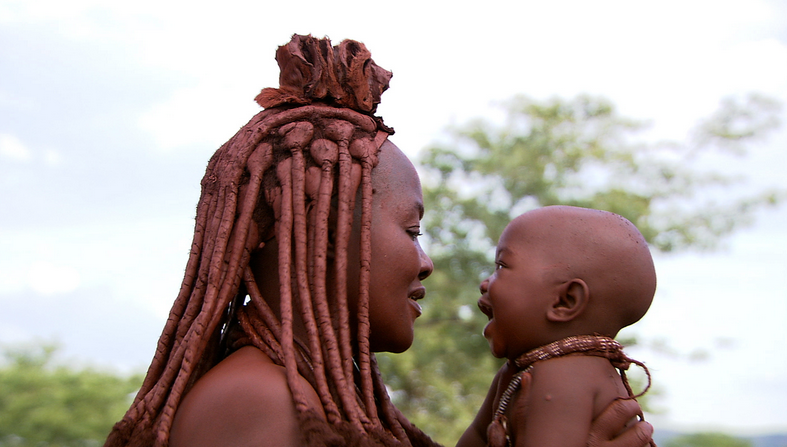One earth, seven continents, and different races. We are humans, but we have characteristics that make us distinct from others. Africa is a continent with tribes and each tribe has features that distinguish them from other tribes. Some are identified by their cultural regalia, some by their tribal marks, and some by their intonation. Culture and tradition are one of those things that define a person’s roots. However, modernization has made some of these traditions extinct. Certain cultures have found a way to preserve their culture and identity regardless of how modernization and migration have shaped the world today.
The Himba people are one of those tribes that have preserved their history and passed down their traditions from generation to generation. The Himba people relate with neighboring tribes but they live in seclusion and avoid external contact. They believe that it is a way of resisting the contamination of their beliefs and culture. They frown at anything that seems to threaten their cultural values and tradition. However, they have been ranked as one of the warmest tribes in Africa and they are courteous to strangers and visitors. The Himba people have a very unique feature that makes them stand out. The Himba people are referred to as the last nomadic tribe in Namibia. They live in what is known as the present-day Northern part of Namibia. They are an indigenous African tribe with an estimated population of fifty thousand people. The Himba tribe are predominantly livestock farmers and the number of cattle a person owns equates to how wealthy the family is.

They are known for their red skin and uniquely designed hair. The red paste used on their skin is called Otijze. Their hair is transformed into red matted braids. The result is gotten by mixing animal fat, ash, and ground ochre.


Otijze is a paste made from a combination of butterfat, omuzumba scrub, and ochre. The paste is used on their whole body, and they do this to protect themselves from the sun and insects. The Himba people also believe that the red paste on their skin signifies the earth and blood. The women use this paste after bathing. However, the women take a smoke bath instead of bathing with water and apply resins to their bodies. This is done due to the harsh climate condition the tribe faces. They live in a desert and there is little to no availability of water. The smoke bath is done to maintain their daily hygiene. The process of a smoke bath is however pretty straightforward like having a normal bath with water. They put smoldering charcoal into a bowl of herbs which is mostly leaves, and some branches of Commiphora trees. After this process, they bow over the smoking bowl until they start perspiring. To achieve a full body wash, they cover themselves with a blanket so that the smoke gets trapped underneath the fabric.


From going about their daily lives to their sex life, the Himba people peculiarly do things. Sex is not seen as sacred or special in the Himba tribe. When a visitor comes to a family, the man of the house shows his approval and pleasure of seeing the guest by giving him special treatment. The treatment is called Okujepisa Omukazendu. This practice means that the man gives his wife to the guest for the night. The man then sleeps in a separate room. When there are no extra rooms, the husband sleeps outside. However, the woman has a right to refuse sex from the visitor but she must sleep in the same room as the guest. The Himba people believe that this practice fosters relationships and hinders jealousy in the community.
The Himba tribe has been around for a long time after surviving the genocide by the Germans in the 1900s. However, one thing they are now threatened by is modernization. A number of young men and women from their tribe now opt for the fast-paced city life, as opposed to their village lifestyle. The elders are scared that their culture and tradition will go extinct years from now, and their stories will only be told in history books.









